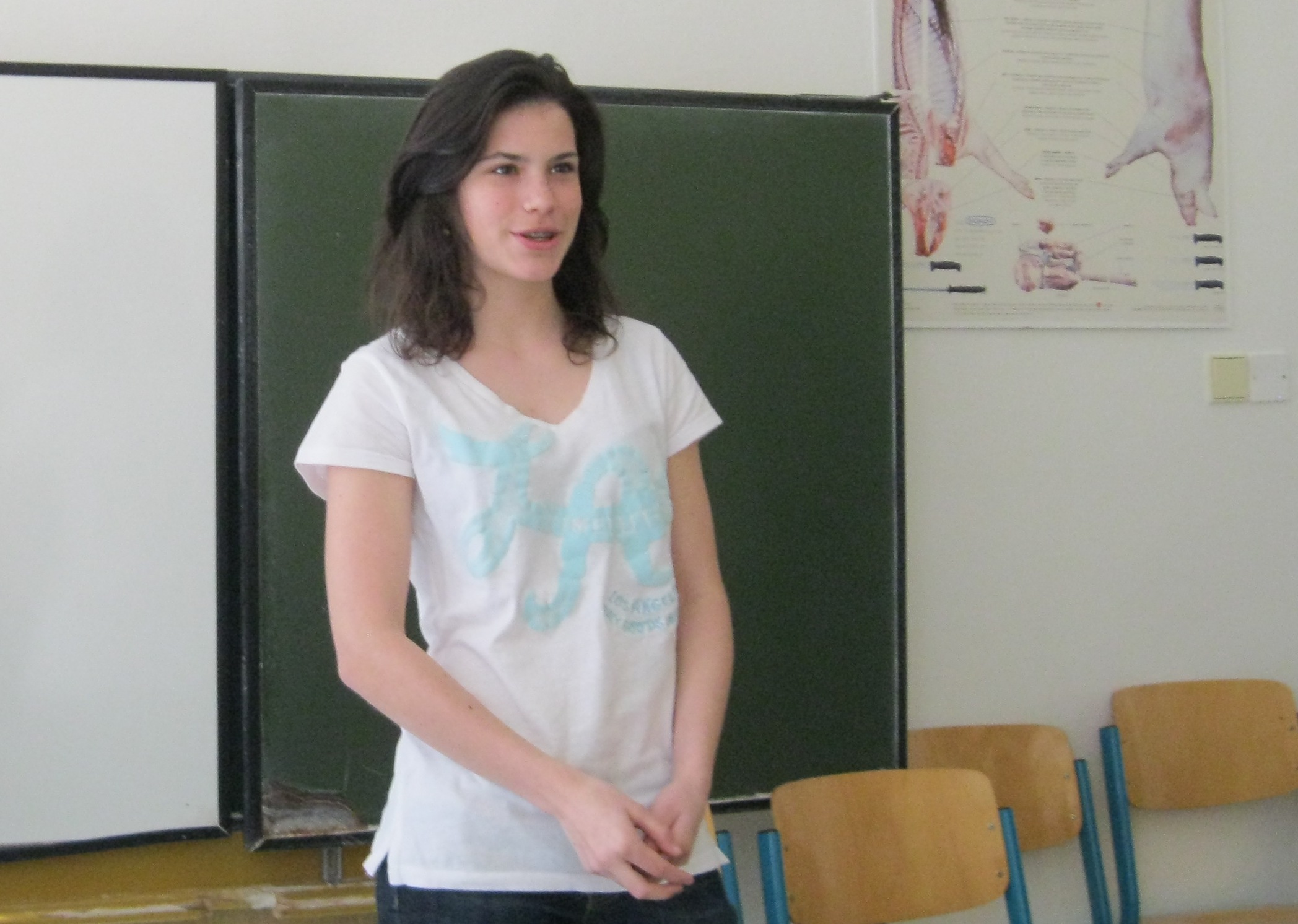MATHEMATICS
1) TOPIC: Mr. Hejny methodology - procedure "the BUS" and "DIGITAL NUMBERS"
prepared by: 7 pupils from class 9 + their English teacher Alena Buroňová
target pupils: class 3 (9 years old pupils) and class 2 (8 years old pupils)
place: primary school IC di via Agnesi, Desio, Italy
date: 20 October 2015 (3rd project meeting, IT)
In the beginning of school year 2015/16 our team was thinking about the lesson for Italy. We could not decide. Then one day a substitute teacher had Math lesson in grade 9. The teacher was disappointed with the students´ work. She made a comment that her pupils from grade 3 would do better. I had a chance to speak to both sides and could see the point. I offered the teacher and the students from grade 9 to have a lesson together and to see what the children from class 3 would be able to solve. So the little children came to our English classroom with the interactive board and Robotel system, they loved the headsets and the board. Their teacher presented the first task, the little children were very active, wanting to work at the board and show how they solved the task. The students from grade 9 were shocked and speechless. They did not understand the tasks nor the way how they were solved. Then they tried to get it and some of them even went to the board just to see that they were wrong. Finally the teacher solved a few of the problems connected to the conditions for the root of an equations for grade 9 with her little pupils. All pupils wrote their comments on this lesson. Then our team discussed this Math lesson which was based on Mr. Hejny methodology, our school uses it in grade 1, 2 and 3. Some students were very happy to learn more as their little brothers or sisters were being taught with this new method. Here you can see some photos from the flipped lesson held on 23 September 2015:
Then it was time to learn more. We cooperated with Mrs. Kameníková from class 3. A who chose the appropriate procedures and explained their methodology to the team. I took part in a few Mr. Hejny methodology lectures. We studied the textbooks, prepared tasks and visuals. Then we visited English lesson in class 3. A and tried our lesson there on 14 October 2015. The little children enjoyed it, but it was not so easy for them because we communicated in English, of course.
The last rehearsal was in the Milano hotel when the team practised on their own and showed the result to their accompanying teachers. We felt very proud of them. The lessons in Italian primary schools went well, they enjoyed both methods which we prepared for them: "the bus" and "digital numbers". They sometimes struggled with their English but we had great helpers there to translate when necessary. Below you can see the presentations prepared for the lesson and a film made during the lesson. The last presentation describes the preparations, aims and objectives and gives more information about the lesson.
Here you can read the summary of our the feedback on the flipped lesson and the lesson plan description for the manual.


EXTRA MATERIALS - WHICH IS NOT FOR MANUAL
1) TOPIC: Peer teaching - ADDING FRACTIONS and SIMPLE EQUATIONS
prepared by: Tereza Pražáková, grade 9 (14 years old)
target pupil: Michal Čep, class 7. A (12 years old)
place: primary school ZŠ a MŠ Ostrava-Zábřeh, Kosmonautů 15, Czech Republic
date: October - November 2015
In the beginning of school year 2015/16 a new pupil came to class 7. A. He was very nice and a little bit scared. Soon he made a friend in class 9. He became one of the best in Math and he was trying to really understand the lessons. Fractions with their rules for adding and multiplying drove him crazy as he felt he could not get it. We discussed this situation in our team which was preparing a Math lesson for meeting in Italy and Tereza who was helping us (she was in Marbella meeting before) offered to take care of it as she knew the boy and she wanted to try the teaching again. She promised to share with us what they were doing but in the end she managed to prepare only one lesson to share because it was too time consuming task. Neverherless, the peer teaching went on well during October and November. Later Michal joined our team and taught himself in Ireland. Below are their photos and one lesson translated in English for the purpose of this project. The material is enclosed also in Czech language. They were using pens and to convert it in the digital form was a great chalenge for Tereza, by doing it she learnt more about the word processor and the way how to write fractions and equations in it.
 |
|
 |
English translation by Tereza:  Czech origional:
Czech origional: 
2) TOPIC: Peer teaching - PYTHAGOREAN THEOREM
prepared by: Natálie Vnenková, grade 8. A (13 years old)
target pupils: class 8. A (16 pupils, 13 years old)
place: primary school ZŠ a MŠ Ostrava-Zábřeh, Kosmonautů 15, Czech Republic
date: January 2016
Natálie prepared a revision lesson on Pythagorean theorem before our semester Math test. She was speaking Czech and she prepared a presentation for her lesson. She used sources from the vikipedia and pictures from Google. Her presentation is not placed here because we were not sure about the rights. Below you can see what was happening in her lesson. Because it was not innovative lesson we did dedided not to write its description for our manual. We enjoyed Natalie´s teaching anyway.The pictures are taken in a Science Museum and they prove the theorem. The red colour is a red liquid and people can move the wheel so the liguid flows down from the square(s) which is / are up.